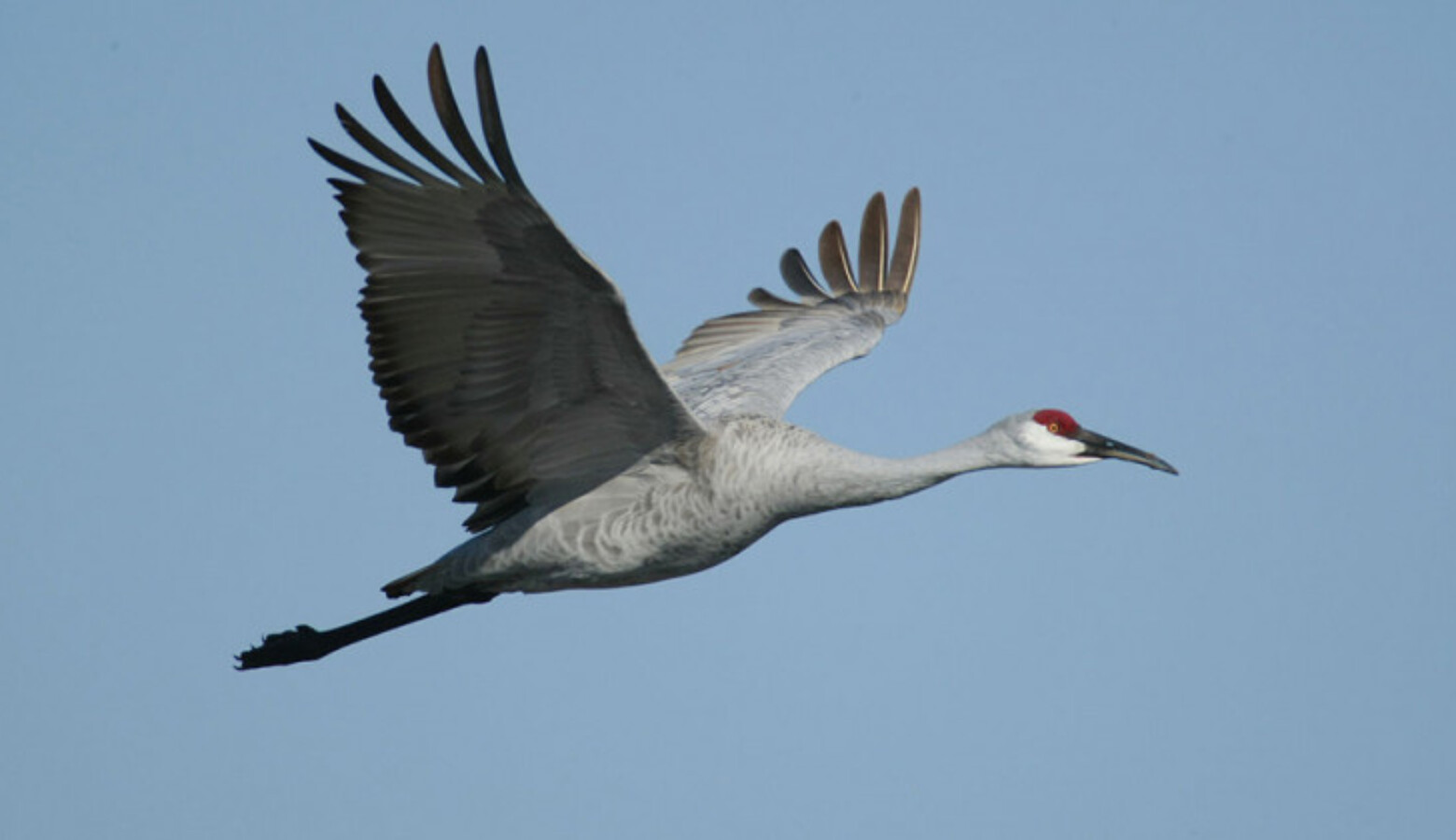Sandhill Cranes And Their Distinctive Sounds Grace Muncie This Week As They Return North For Mating

Late February and early March in Indiana, amid cars splashing through puddles of snow melt, and children playing and sledding in snow that crunches under their feet, Hoosiers will likely hear this:
You are hearing an aerial marketplace of expressions – voiced by sandhill cranes. A flock of around 100 Sandhills was seen flying over Muncie on Thursday. You can hear them exchanging travel notes on the audio app, above.
They are returning to the north from wintering in Mexico, and several southern states, where their food sources are plentiful. For sandhill cranes, Indiana is a combination flyover state and rest stop, as they head further north to Canada and Alaska for spring and summer. Once they settle in those areas, they mate and raise their young – then they fly back south in the fall.
Experts say as a flock is flying about, you will hear mated pairs of cranes – who mate for life – sending each other messages. Other sky shared messages are for territory, play, and travel directions.
Sandhill cranes appear to some as pterodactyl-like. A mature sandhill crane stands four feet tall, has a six-foot wing span, and can live to 35 years or more.
One of the prime Midwest stopovers for Sandhill cranes to rest and eat is the Jasper-Pulaski Fish and Wildlife Area, southeast of Gary. The Indiana Department of Natural Resources says around 30,000 can be seen there during migration.
(Audio recording by Allison Pareis)
